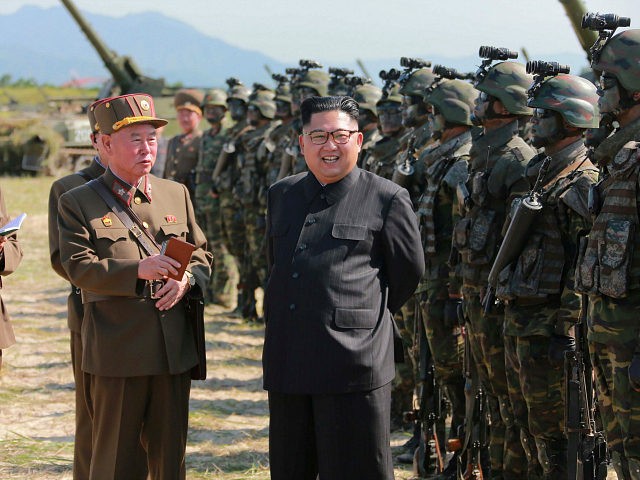North Korea’s state-run KCNA news service on Thursday denied this week’s Japanese television report of a deadly tunnel collapse at the Punggye-ri nuclear test site, calling it a “false report” and “misinformation” intended to slander the North Korean government.
While the number of fatalities asserted in the Japanese report may be debated, South Korean scientists are confident a series of dangerous earthquakes occurred after the sixth and most powerful nuclear detonation carried out by North Korea on September 3rd. Nam Jae-chol of the Korea Meteorological Administration recently warned that further detonations at Punggye-ri could risk catastrophic tunnel collapses and the release of “dangerous levels of radiation into the surrounding atmosphere.”
Of particular concern is an empty space some 100 meters in diameter detected by satellite imagery of nearby Mount Mantap. Both Korean and Chinese analysts have warned this space could be exposed to the outside atmosphere by further landslides and structural damage to Mount Mantap. Some weather forecasters worry that, if the report of a tunnel collapse is accurate, nuclear material may already be in the wind and conditions are favorable for the radiation to spread toward northern Japan.
Few outsiders expected the North Korean regime to admit there was a serious collapse at their nuclear test site or that many lives were lost. Coincidentally, Canada’s National Post published a deep dive into KCNA on Wednesday in which it was noted that Japan ranks just behind South Korea and the United States in Pyongyang’s “hate hierarchy.” Warnings that Japan is planning to re-invade Korea and get the Empire of the Rising Sun up and running again are a staple of KCNA editorials. It is not surprising that Japanese news broadcasts damaging to the Kim regime would be angrily dismissed.
The National Post also observed that KCNA never reports on calamities from North Korea, but dwells endlessly on every real and imagined bit of bad news from South Korea. It portrays nuclear weapons as a glittering national treasure, a “precious fruition borne out by the bloody struggle of our people to protect the destiny and sovereignty of the country from the U.S. imperialists’ nuclear threats,” as the North Korean news agency recently put it. There is little reason to think searing honesty about a disaster at Punggye-ri would be in the cards.
The latest news about dangerous North Korean technological advancement is more about their missile program than nuclear weapons, although the latter are still very much a threat. A U.S. official told CNN on Thursday that North Korea is hard at work on an advanced version of its KN-20 intercontinental ballistic missile that could strike the United States, prompting American military planners to recalculate their estimates of when Pyongyang could acquire such capability. CNN’s sources said it was possible North Korea might be able to mount a miniaturized nuclear warhead atop an ICBM by the end of 2018.
“The improvements that North Korea is making that indicate the threat is more urgent include: improved solid rocket fuel with more stability that burns hotter and more evenly to help the missile achieve greater distances; improved rocket motors and engine components, and improved targeting and guidance systems,” CNN reports. Additionally, while the North Koreans do not seem to have reliable reentry shielding for nuclear ICBMs yet, their last few missile tests suggested progress is being made on that front.
CNN mentions that U.S. officials are not fully crediting “regional press reports” about hundreds of North Korean workers killed in a tunnel collapse at Punggye-ri, but U.S. intelligence is “watching the site closely to try to assess what damage may have recently occurred.” It is possible that Japanese media’s sources overstated the damage from a possible tunnel collapse, but the North Koreans are nevertheless apprehensive about using the site for further detonations.
On Thursday, South Korea’s Intelligence Service told lawmakers that a “flurry of activity” has been detected at missile research facilities in Pyongyang, suggesting a new missile test could be imminent.
South Korean intelligence further believes the Punggye-ri site could have been damaged by the September nuclear test but warned North Korea will “constantly push for further nuclear tests going forward, and the miniaturization and diversification of warheads.”

COMMENTS
Please let us know if you're having issues with commenting.